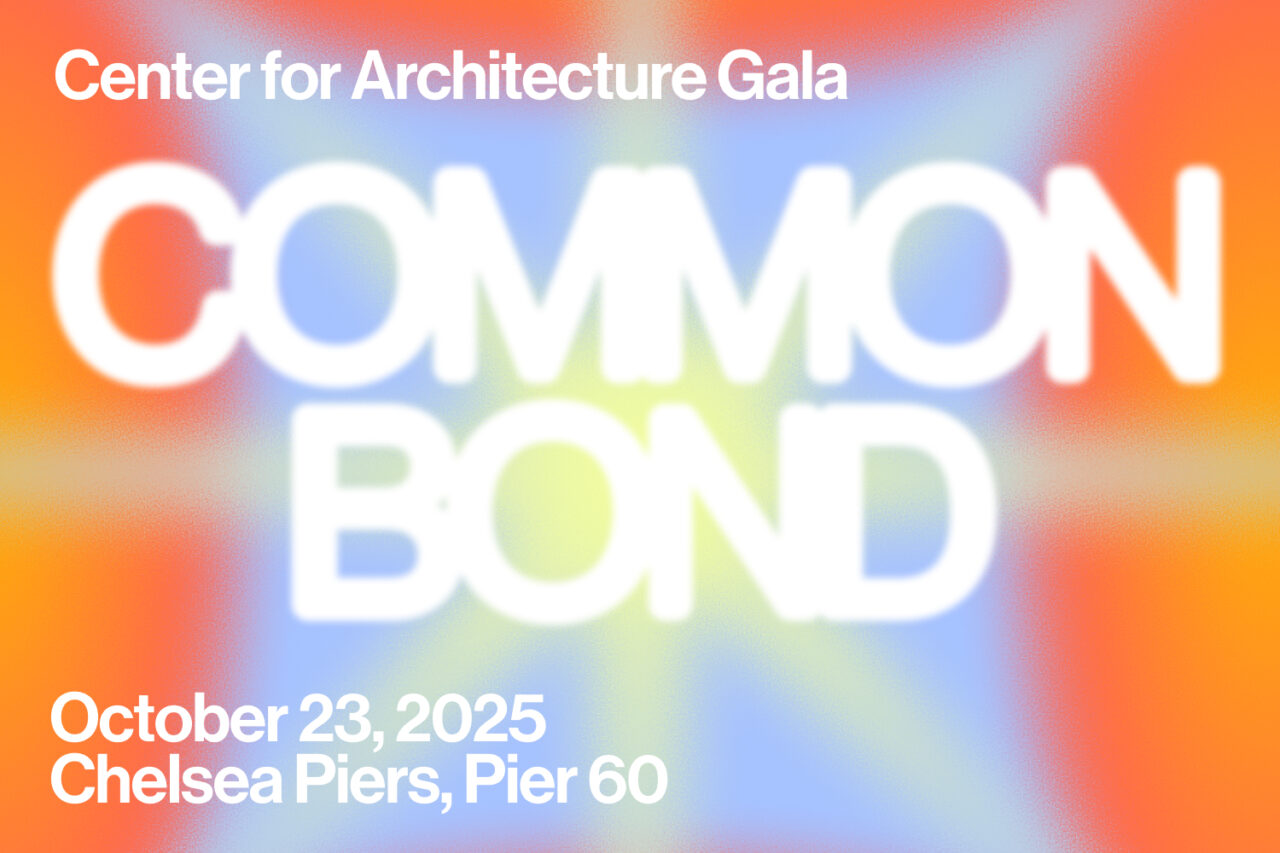by lkim
AIA New York and the Center for Architecture are gearing up for Common Bond: The Center for Architecture Gala, taking place at Chelsea Piers, Pier 60 on October 23, 2025. The event serves as the single largest funding source for the Center for Architecture and celebrates design excellence in New York City, gathering together hundreds of professionals in the architecture, engineering, and construction communities. This year, Common Bond is honoring four leaders in architecture, housing, sustainability, and preservation for their contributions to the built environment: REX, Daniel Brodsky, Joel Towers, AIA, and Maria Torres-Springer.
Each year at Common Bond, the Center for Architecture also provides scholarships to outstanding architecture students, chosen by area schools that have been selected by our honorees. As an industry, it is critical to support and invest in our bright young students while they are still in school as high education debts after graduating force many promising designers out of our professions. We are delighted to introduce you to these three remarkable students who will each receive $3,500 to pursue degrees in architecture.
Meet Our Scholarship Recipients

Justine Flora
Master of Architecture Candidate, Bernard and Anne Spitzer School of Architecture
After receiving her Bachelor of Arts in Architecture from Barnard College, her early career drafting for the luxury retail sector taught her the nuances of construction documents, code, and spatial layouts. Yet the rapid turnover of projects and use of rare materials left her questioning how design could engage more meaningfully with public life and environmental responsibility.
Her explorations into landscape architecture, graphic design, illustration, yoga education, and food activism deepened her belief in the primacy of space and community. Teaching showed her that play can spark curiosity and make learning joyful, a principle that continues to shape her design practice. In 2017, she co-founded Bowl Cut Table, an Asian-American, female-run collective that repositions meals as tools for resistance. During the pandemic, the group’s Not Too Sweet dessert boxes raised over $8,500 for grassroots organizations supporting food security, pandemic relief, and social justice.
These experiences remind her that design, from the kitchen to the classroom, has the power to strengthen collective networks. Her drawing practice, informed by early drafting, remains the medium that unites Flora’s pursuits. She aspires to become a licensed architect, a professor of architecture, and to establish a worker-owned practice committed to creating spaces that catalyze nourishing and supportive relationships within communities while addressing the realities of climate change and local history.

Amanda Mostafa
Bachelor of Architecture Candidate, New York City College of Technology
Amanda Mostafa is a fourth-year Bachelor of Architecture student at New York City College of Technology. She currently works as an Adjunct College Laboratory Technician in the Digital Fabrication Lab, where she supports students with digital fabrication, model-making, and parametric design projects.
What got her into architecture was her fascination with the varied architectural styles of different countries, and the process of experiencing a building constructed piece by piece from scratch as land is transformed into the site of a building standing tall. Later on while studying architecture, Mostafa had an interest in parametric fabrication and computational design which guided her to study architecture even further, with a focus on how the discipline bridges technology and community. She sees design as a tool not only for creative exploration but also for solving real-world challenges in equitable and sustainable ways; she believes in building a better sustainable environment not only for the environment but for the people in it.
Beyond her academic work, Mostafa serves as President of the American Institute of Architecture Students (AIAS) and of Freedom by Design, where she organizes firm tours, professional workshops, and networking events that help expand student opportunities and connect education with practice. She also helps curate the department’s exhibitions, Techne and Building Blocks, which highlight student work and foster the school’s vibrant studio culture.
Looking ahead, Mostafa envisions a future where she continues to expand her education, experience, and her possibilities of design and technology while remaining grounded in social responsibility. She wants to contribute to the field through research, practice, and teaching developing methods that push the boundaries of architectural form while ensuring that architecture remains inclusive, sustainable, and impactful for the communities it serves.

Daniela Pedroza Altamirano
Bachelor of Architecture Candidate, Parsons School of Design
Daniela Pedroza Altamirano is a fourth-year architecture student at Parsons School of Design, where she is also pursuing a minor in Urban Studies and Sustainable Cities. She serves on the board of the AIAS Parsons Chapter, where she leads initiatives focused on student mentorship, academic support, and expanding access to professional resources. Seeking to establish herself as an architectural educator, Altamirano has served teaching positions ranging from introducing elementary students to design fundamentals at Parsons’ Summer Academy to tutoring this year’s underclassmen architecture cohorts. At Parsons, the design process of heavily iterative making as a way of thinking has shaped how she approaches teaching and making alike, emphasizing unleashed experimentation as a core value in her work.
Having grown up across cities in South and Central America, Altamirano developed an early awareness of the instability of housing in underserved urban environments and rural communities. This shaped her commitment to advancing the field of disaster relief architecture, addressing shelter not only at the level of structure, but across urban, social, and environmental systems. She is particularly interested in developing strategies that use low-impact, health-conscious materials that respond to local ecologies and conditions. Through design, she aims to build systems of care that support communities before, during, and after crises.
